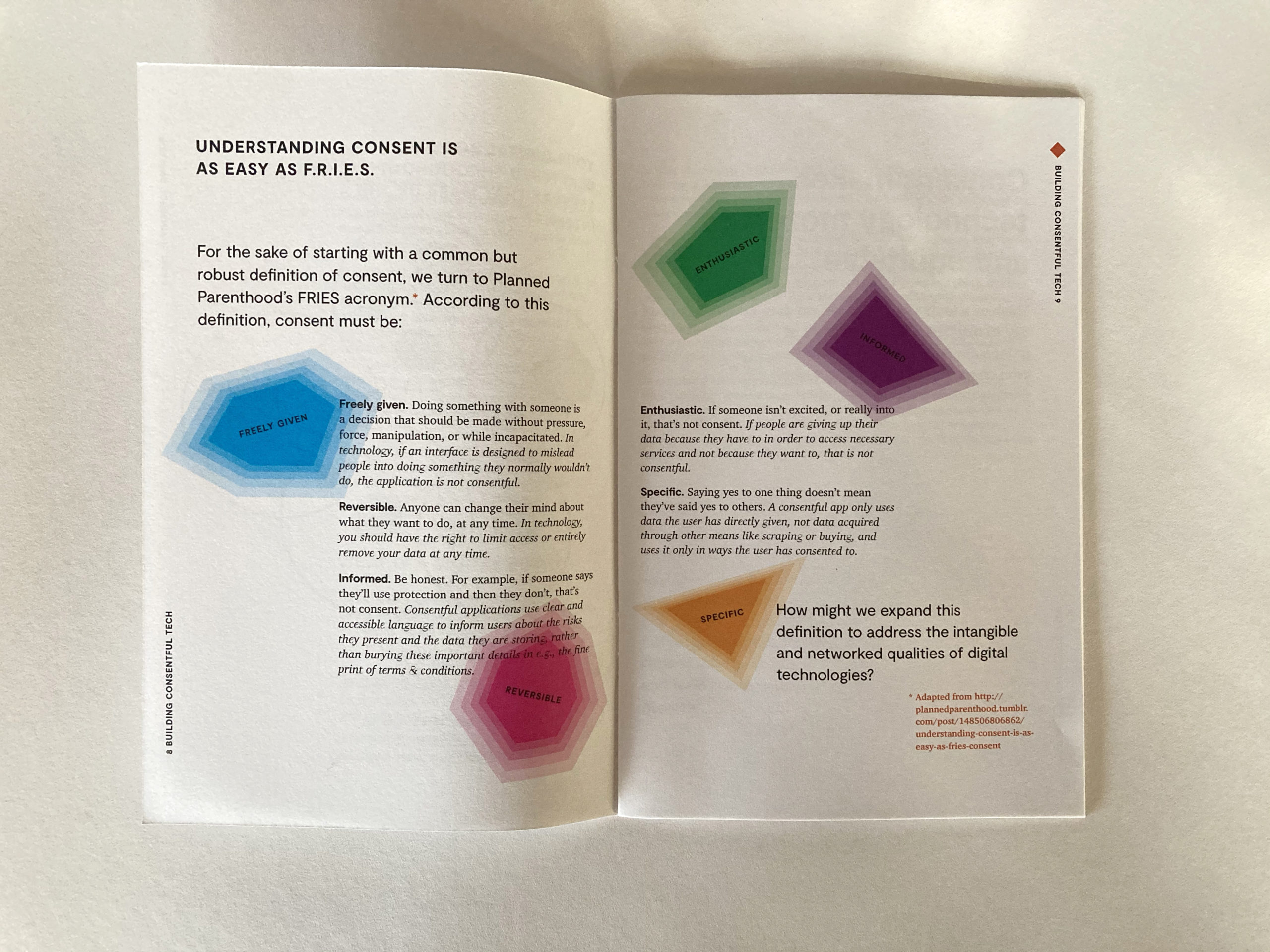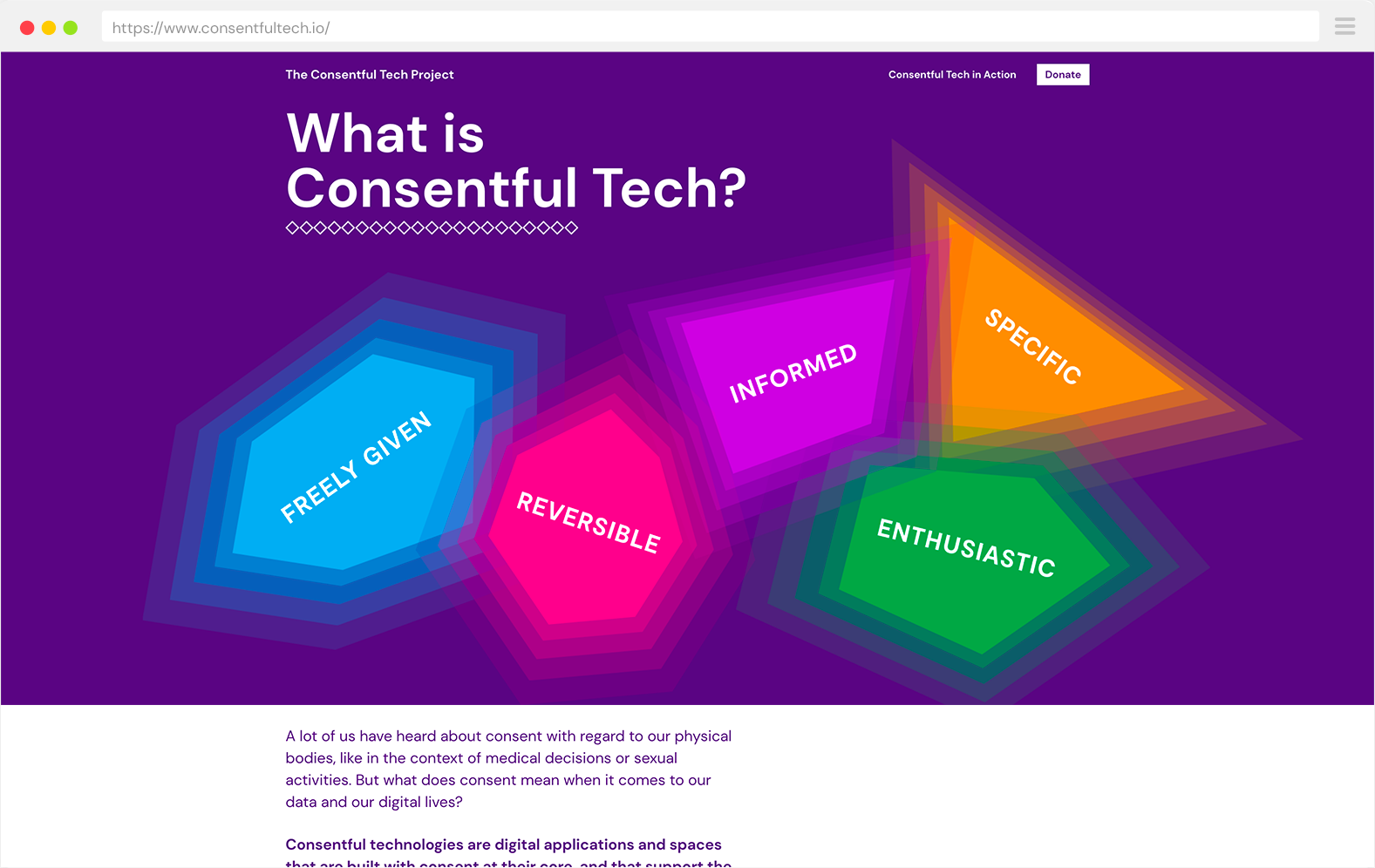
In the world of mainstream digital technologies, consent has meant checking a box that says “I agree to these terms and conditions.” You may not understand what you have agreed to, or you may be forced to agree in order to access important services, but in the eyes of these technology providers, you have provided consent.
Consent in technology also looks like the simple act of leaving home. Out in public, you can legally be subject to video surveillance and in some jurisdictions, the use of facial recognition technology on footage of you. By appearing in public space, you have consented to being monitored.
You can also consent by doing nothing. Your name, age, mailing address, and family members’ names can be listed in online directories until you explicitly request that the information be removed.
This view of consent has given rise to a host of issues related to data privacy (or the lack thereof) — issues that have a more profound impact for those who are marginalized by systemic forces like ableism, racism, class privilege, patriarchy, and heterosexism. Having contended with data privacy and equity issues in our personal experiences as well as through processes of designing technologies, we started to ask ourselves, can’t there be a higher standard for consent in tech?
Partners
Offerings
Location
BACKGROUND
This line of inquiry came about somewhat incidentally when we were working on the Ripple Mapping Tool, an app that crowdsources stories from participants of community programs and generates visualizations of the impacts of those programs. While designing the logic of the storytelling system, we identified the need for strong consent practices to respect the privacy of people who might not want to be named in these stories.
We assumed — naïvely — that the tech sector had established standards and best practices around consent, in the same way that fields like medicine and research have. Our searches returned very little to guide us, and instead revealed a deep need to draw attention to the ways that technology makers’ concepts of consent are vastly different than most people’s intuitive understanding of consent. At this point, we decided to pause our work on the Ripple Mapping Tool until better consent standards and practices were established, and pivoted to working on what came to be called the Consentful Tech Project.
The work so far
We started by writing a zine called Building Consentful Tech in collaboration with the Ripple Mapping Tool’s engineer Dann Toliver. In it, we introduce the term consentful technology: digital applications and spaces that are built with consent at their core, and that support the self-determination of people who use and are affected by these technologies. Whereas consensual implies a discrete agreement between two parties, consentful speaks to imbuing technology with a culture of consent.
The zine, which we also designed, leans on the work of movements against gender-based violence, and puts forward a framework for good digital consent based on Planned Parenthood’s FRIES model: Freely Given; Reversible; Informed; Enthusiastic; and Specific. It also puts forward some initial ideas for design processes and technical implementation that we hoped would kickstart the development of best practices. The zine is available for free download here.
The impact so far
After being released in 2017, the zine has been widely cited and has been used as a resource for numerous tech and tech-related projects such as a public library program in which young people designed consentful tech for youth, a prototype for reversible consent, and an opt-in (rather than the ubiquitous opt-out) analytics feature on websites for Allied Media Projects and the Allied Media Conference.
We founded the Consentful Tech Project in 2018 in response to requests for trainings and case studies on which to model tech projects. Some of the things we have been up to through the Consentful Tech Project include:
• Training the Detroit Community Technology Project’s (DCTP) Equitable Internet Initiative Digital Stewards
• Working on a curriculum for teaching consentful tech principles and design processes in collaboration with DCTP
• Presenting at the Allied Media Conference, the Mozilla Festival, the Digital Equity Lab, and the World Economic Forum
Learn more about the Consentful Tech Project and latest news here. The project is a labour of love for our studio and is currently unfunded. Your support would be much appreciated!
Get Involved

Read the zine
Building Consentful Tech is a free 28 page zine for anyone who uses, makes, or is affected by digital technologies and wants to build a more consentful world. Intended as a community conversation starter rather than a comprehensive guide, it was written with input from dozens of technologists, designers, and community organizers.

Teach the curriculum
From protecting ourselves to taking care of each other: A curriculum for building and using technology consentfully is meant to support those looking to best use technology in service of care, safety, and consent. It will lay the groundwork with key concepts like data and data bodies, safety vs. security, consent, and how these relate to our individual and collective lives. This curriculum guides readers through the application of these concepts to build consentful cultures and technologies and how to advocate for the adoption of such in their communities.

Visit the website
See case studies of Consentful Tech in action and learn about upcoming events.
Credits
Zine Writing
Curriculum & Trainings
Graphic Design
Design Direction
Web design
Funders
Fiscal Sponsor
Time Frame
2016–Present






